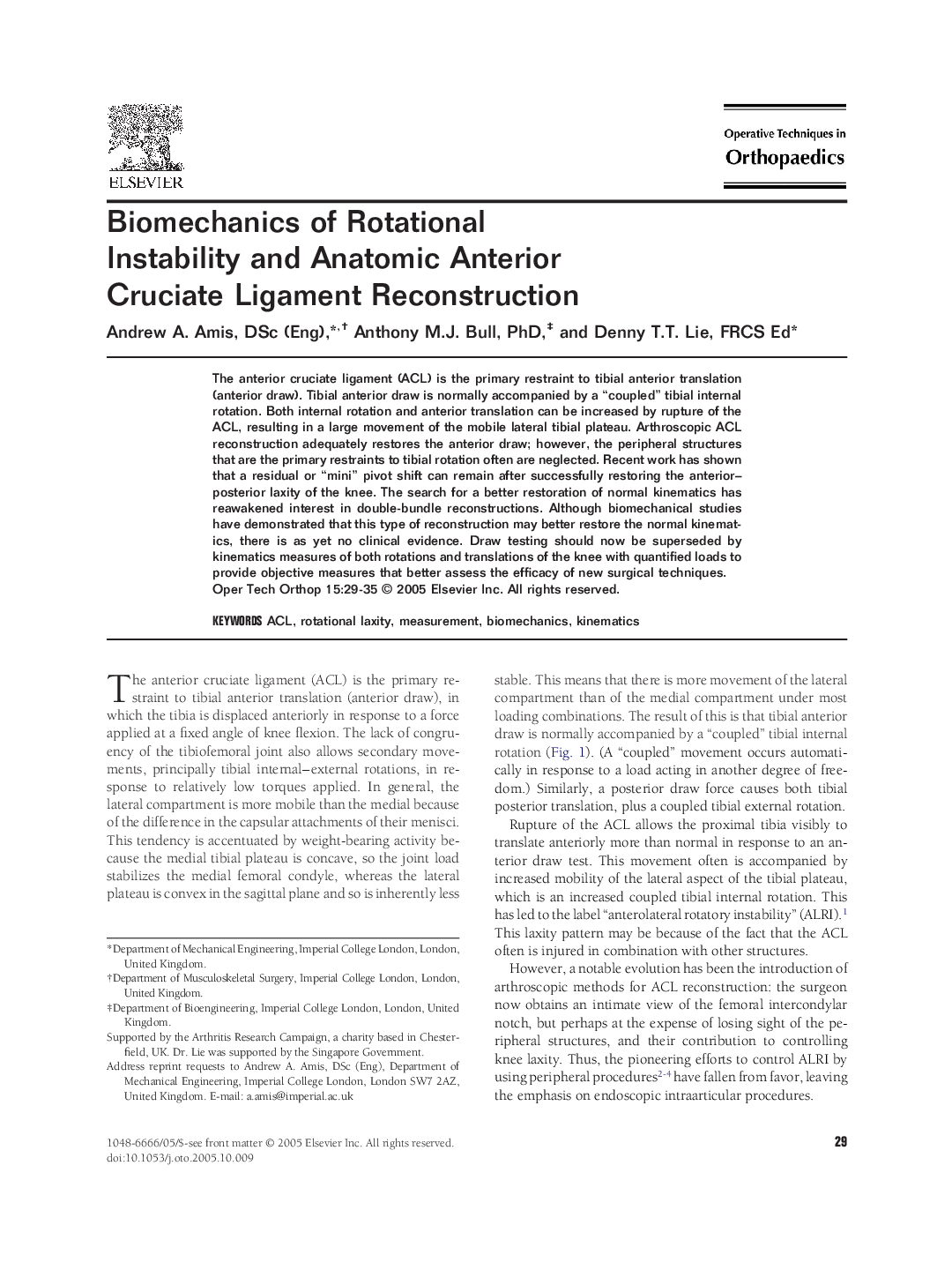| Article ID | Journal | Published Year | Pages | File Type |
|---|---|---|---|---|
| 9356717 | Operative Techniques in Orthopaedics | 2005 | 7 Pages |
Abstract
The anterior cruciate ligament (ACL) is the primary restraint to tibial anterior translation (anterior draw). Tibial anterior draw is normally accompanied by a “coupled” tibial internal rotation. Both internal rotation and anterior translation can be increased by rupture of the ACL, resulting in a large movement of the mobile lateral tibial plateau. Arthroscopic ACL reconstruction adequately restores the anterior draw; however, the peripheral structures that are the primary restraints to tibial rotation often are neglected. Recent work has shown that a residual or “mini” pivot shift can remain after successfully restoring the anterior-posterior laxity of the knee. The search for a better restoration of normal kinematics has reawakened interest in double-bundle reconstructions. Although biomechanical studies have demonstrated that this type of reconstruction may better restore the normal kinematics, there is as yet no clinical evidence. Draw testing should now be superseded by kinematics measures of both rotations and translations of the knee with quantified loads to provide objective measures that better assess the efficacy of new surgical techniques.
Keywords
Related Topics
Health Sciences
Medicine and Dentistry
Orthopedics, Sports Medicine and Rehabilitation
Authors
Andrew A. DSc (Eng), Anthony M.J. PhD, Denny T.T. FRCS Ed,
